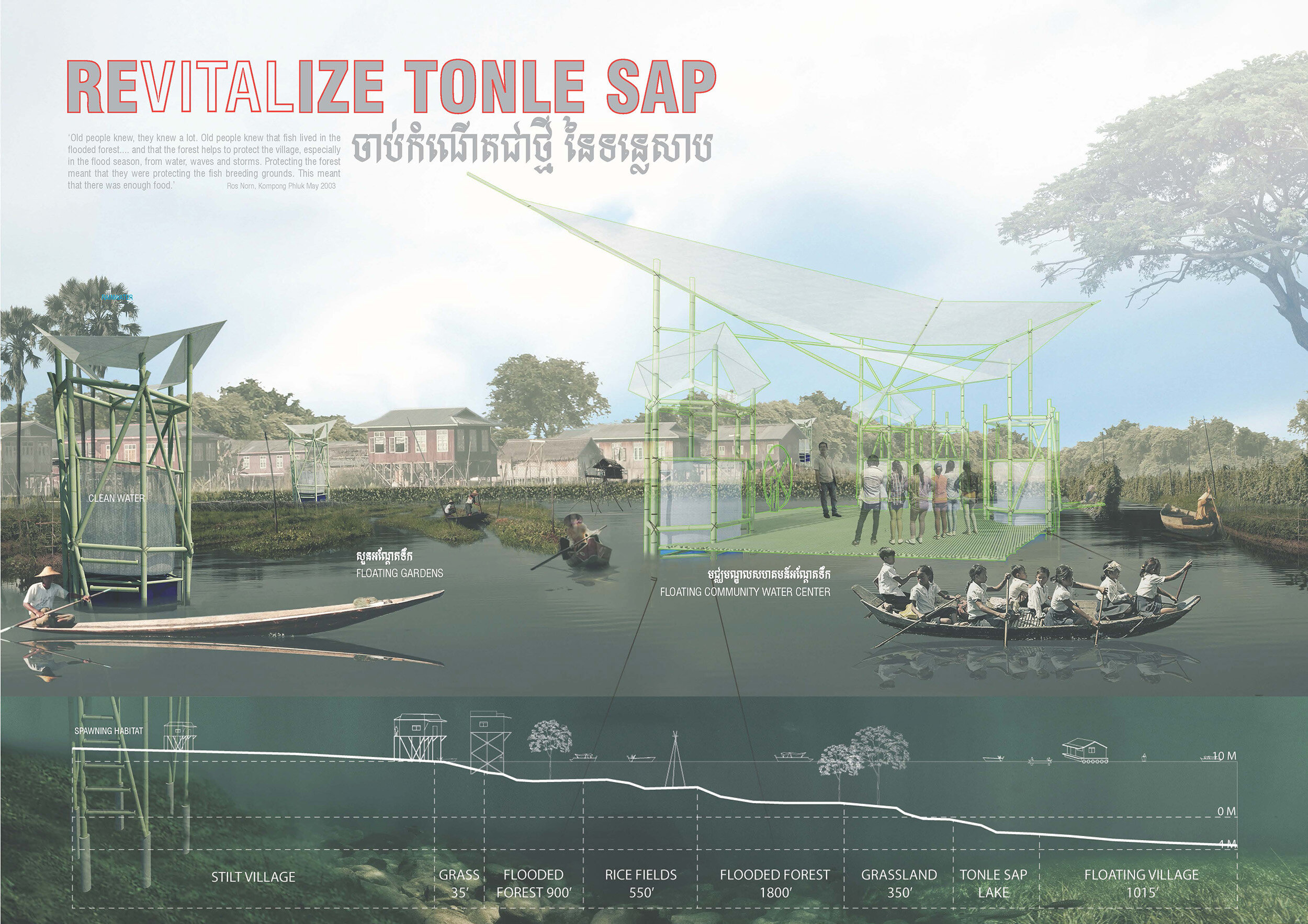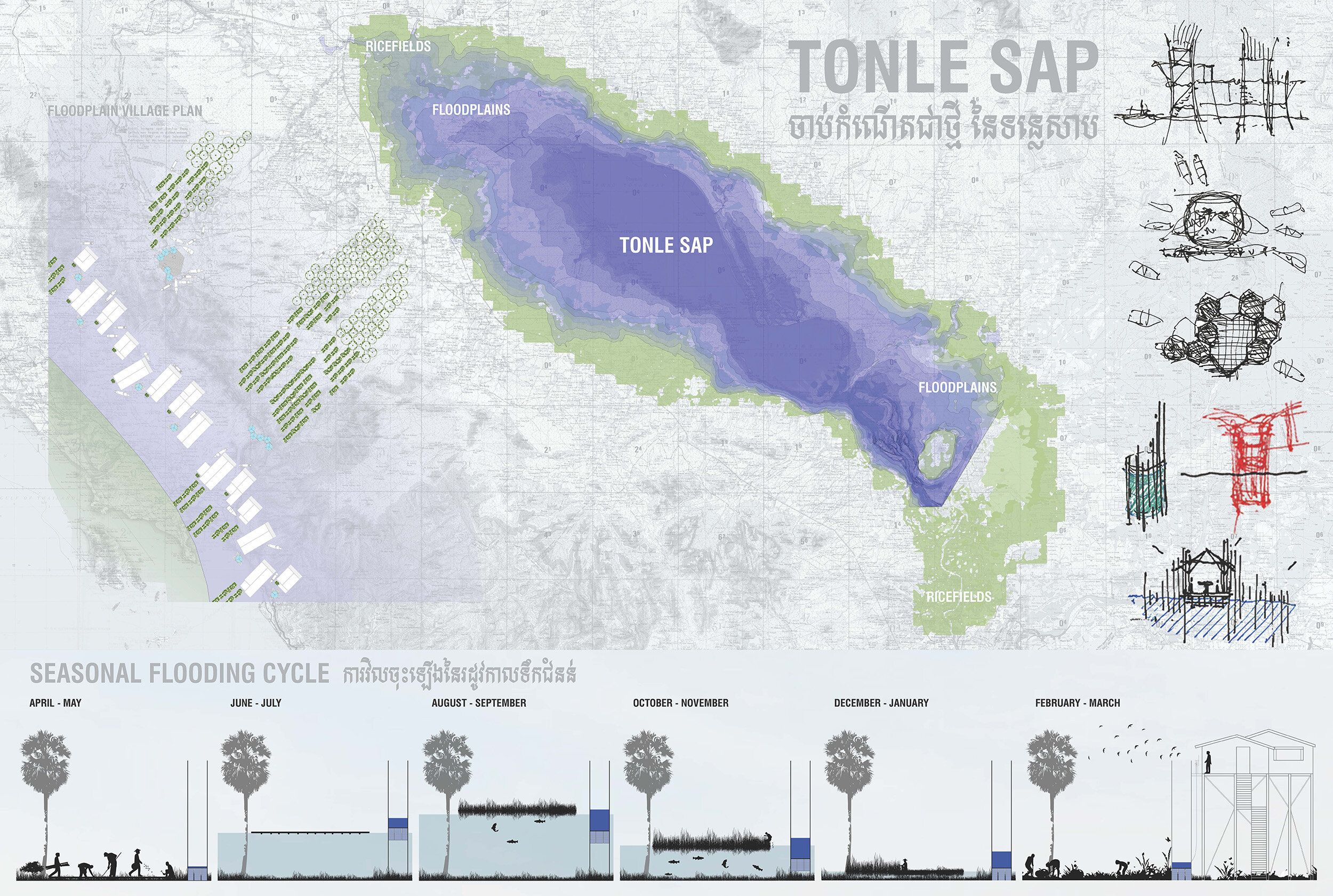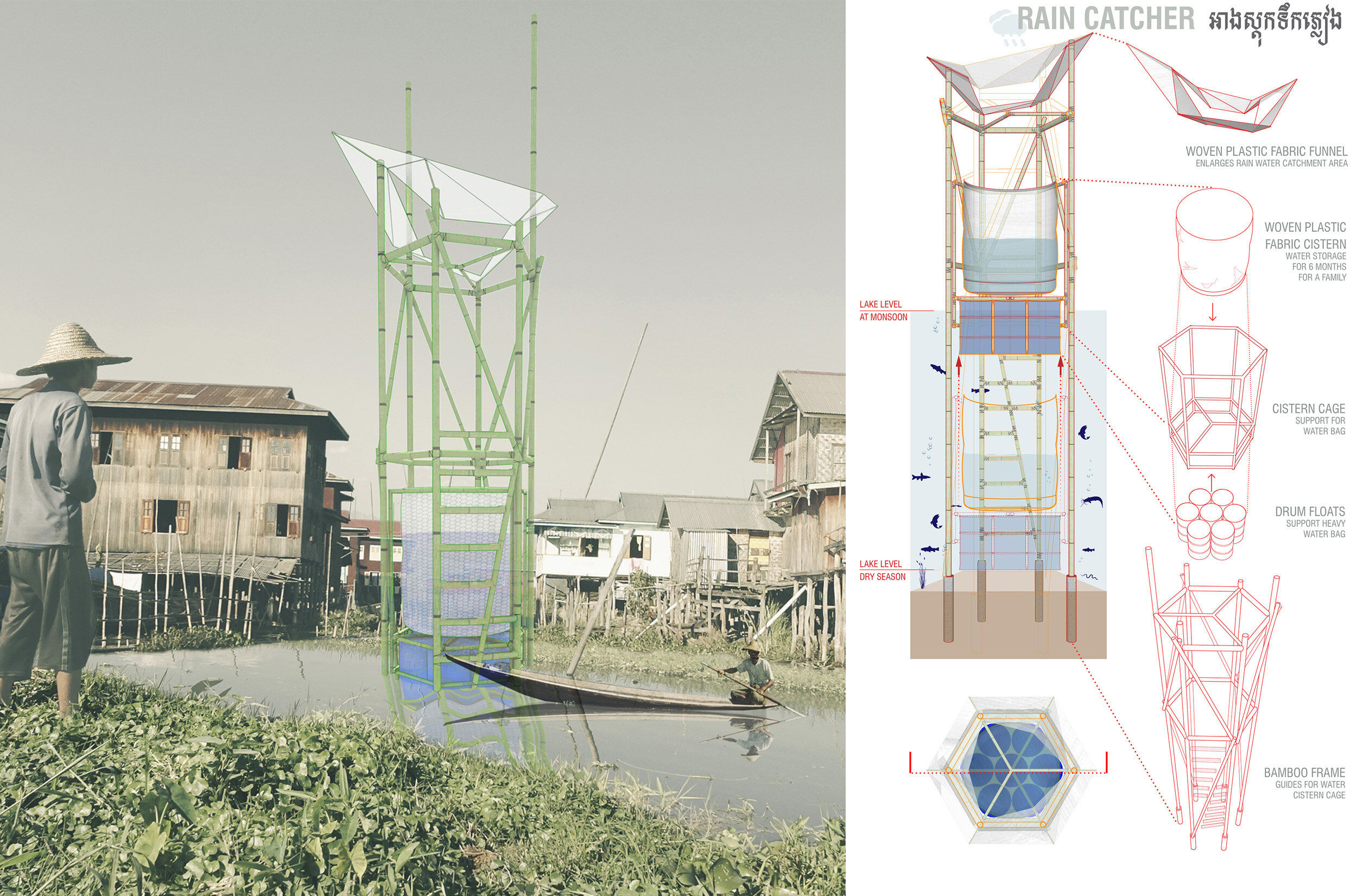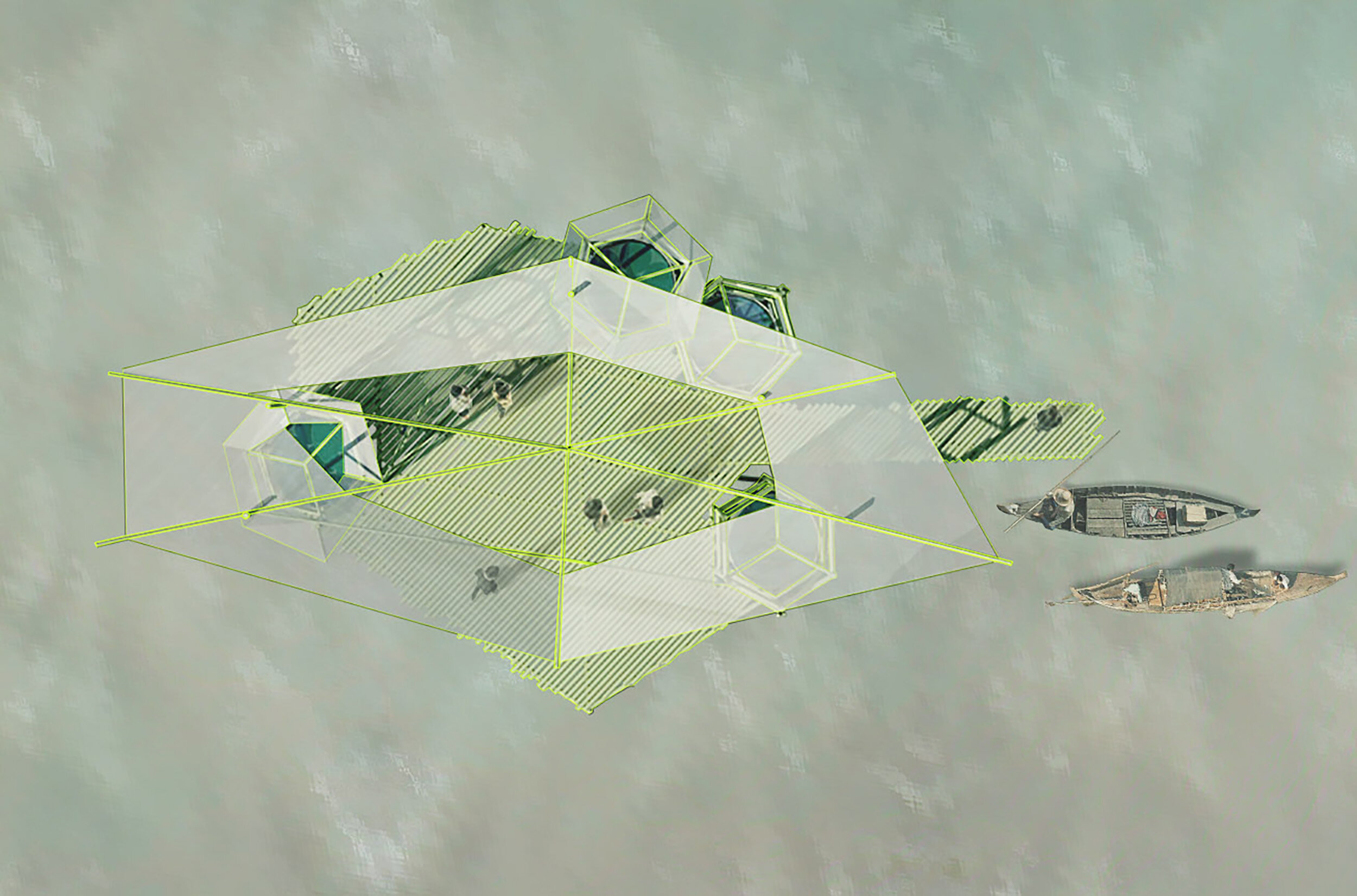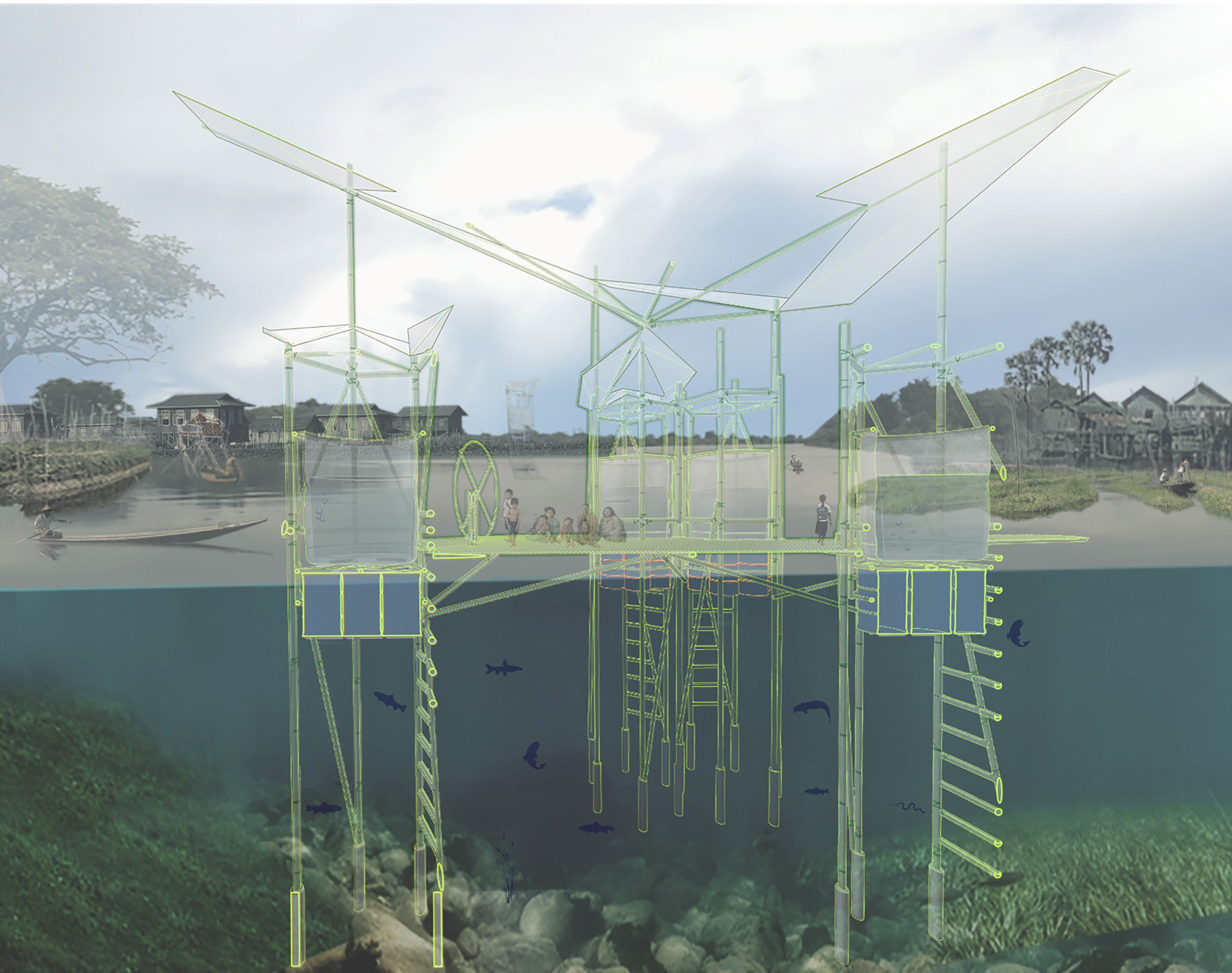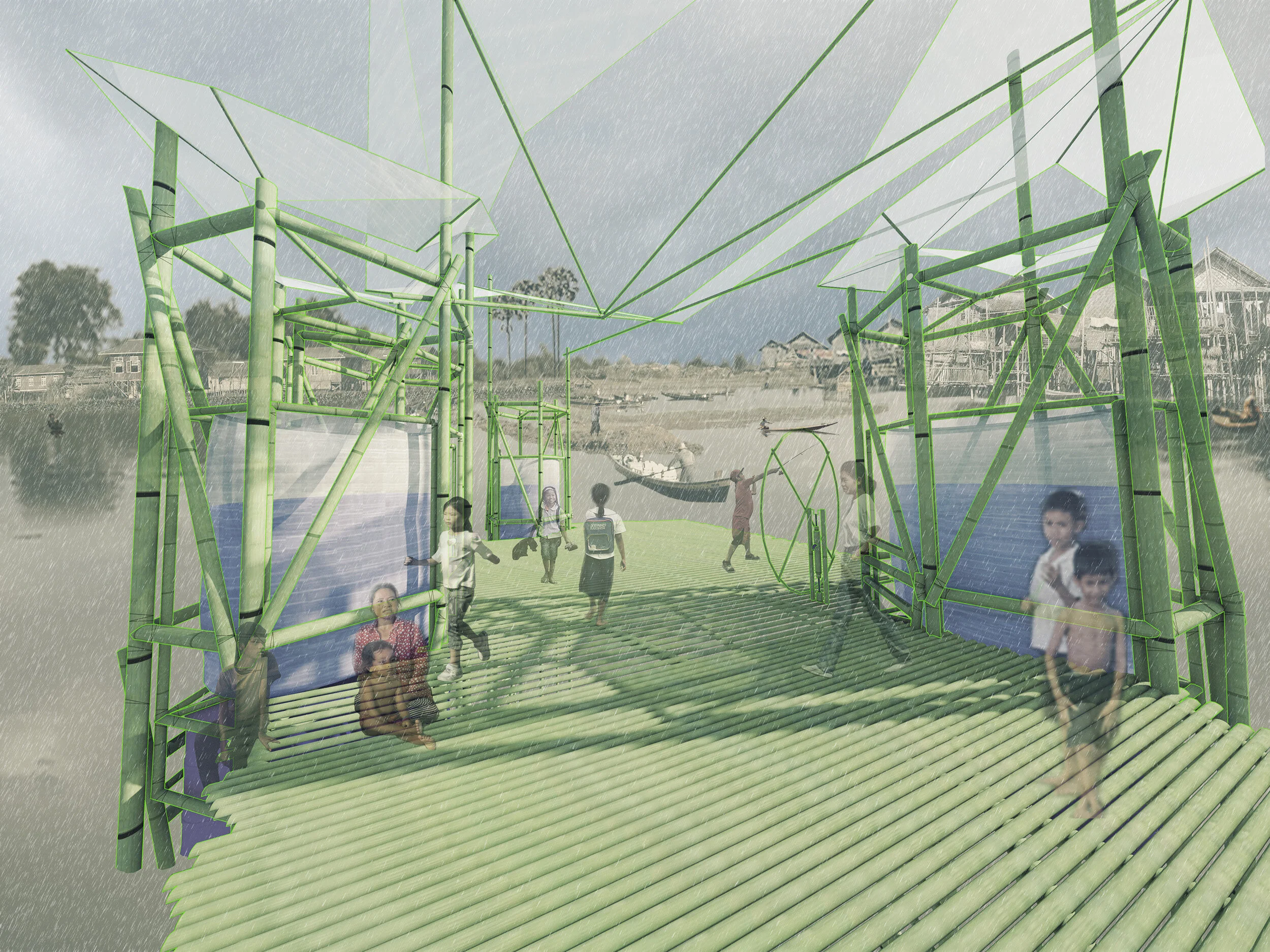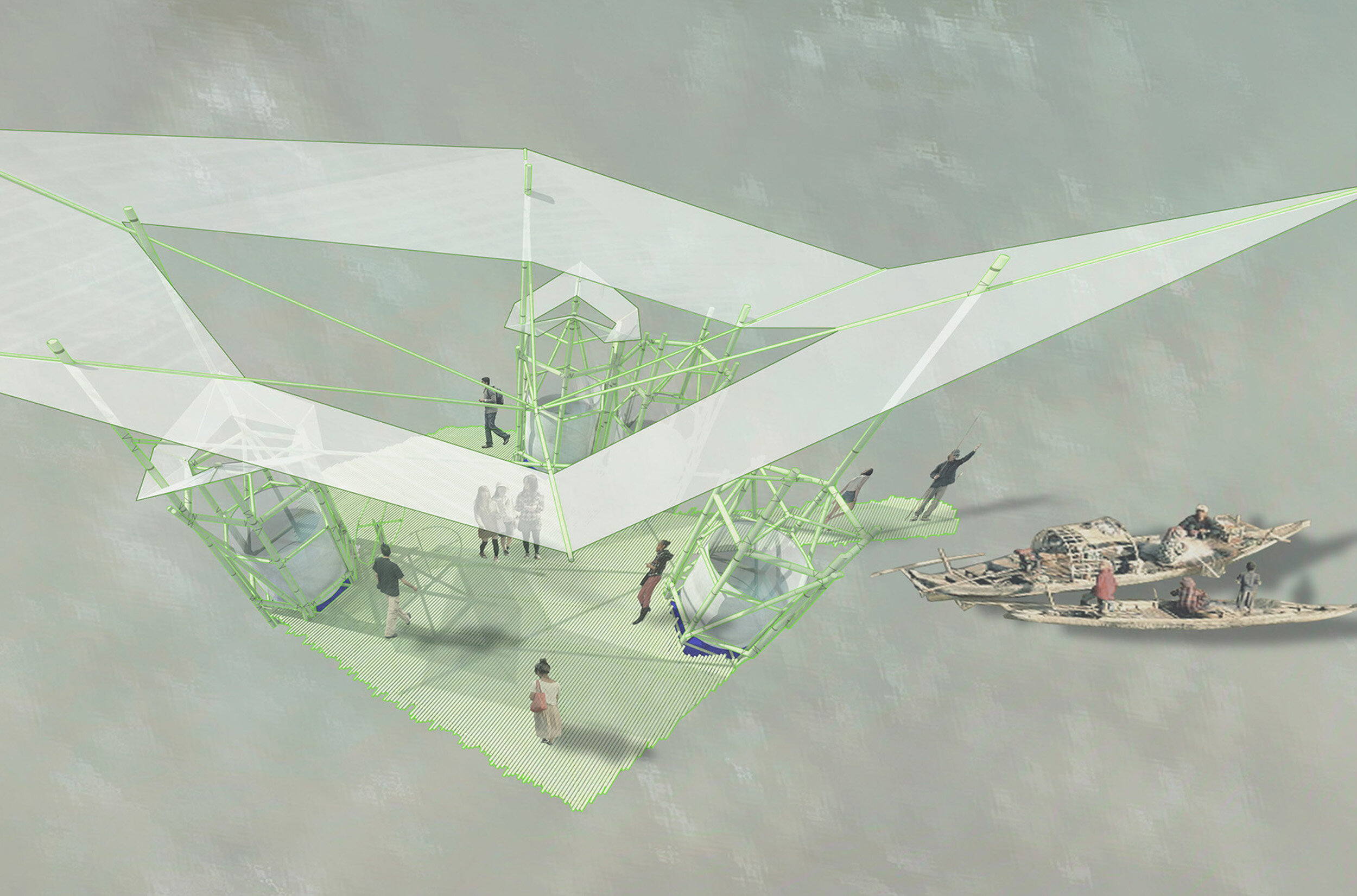Tônlé Sap Competition
The ancient Khmer empire was built upon their mastery of water, harnessing the seasonal monsoon rains, storing and distributing large quantities via a network of canals and reservoirs. Following the deterioration of this hydraulic network, the historic practice of harvesting and sustaining water quality is a particular challenge and opportunity when tied to the powerful natural cycles of Tônlé Sap Lake in Cambodia. It is this vital pulse of the monsoon floodwaters that served as inspiration for the floating rain harvester and gardens concept.
Tônlé Sap is one of the world’s most bountiful lakes, home to many endangered fish and wildlife species, central to Cambodia’s overall food production. The water quality is depreciating however, and threatening the livelihoods of the lake’s inhabitants. The communities most affected by the lack of clean water are those located on the flood plains, experiencing the highest seasonal variation in water level. These households do not have access to clean ground water for domestic use and rely on public or open sources of water. Our approach has focused on this zone by creating small interventions with an outsize impact, by providing individual families with capacity to sustain their resiliency. Rainwater harvesting with significant water storage capacity would allow families access to clean water throughout the dry season and avoid the need to purchase water.
These insertions into the existing habitation patterns are focused on flexibility and adaptability grounded in the local traditions and low technology. A simple cistern is proposed of the ubiquitous woven plastic fabric found throughout Asia. The 1800 gallon bag is supported on floats, moving up and down according to the cycle of the monsoon floodwaters, with clean water remaining accessible for use above the level of the surrounding lake. The adaptable rain catcher module can be stand-alone or grouped, on stilts or floating and tethered, and sized for one household or clustered into a Water Center as a hub to support educational, health-screening, or community gatherings. The water harvesting infrastructure helps sustain and balance the ecological cycle of the lake, from dry to wet, while providing the basic needs for social and economic survival and enhancing the cyclical relationship between people and the environment.

